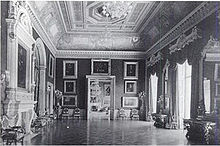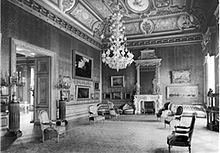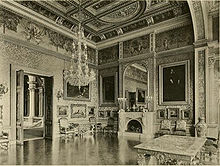
Buckingham Palace is a royal residence in London, and the administrative headquarters of the monarch of the United Kingdom. Located in the City of Westminster, the palace is often at the centre of state occasions and royal hospitality. It has been a focal point for the British people at times of national rejoicing and mourning.

Alfred Waterhouse was an English architect, particularly associated with Gothic Revival architecture, although he designed using other architectural styles as well. He is perhaps best known for his designs for Manchester Town Hall and the Natural History Museum in London. He designed other town halls, the Manchester Assize buildings—bombed in World War II—and the adjacent Strangeways Prison. He also designed several hospitals, the most architecturally interesting being the Royal Infirmary Liverpool and University College Hospital London. He was particularly active in designing buildings for universities, including both Oxford and Cambridge but also what became Liverpool, Manchester and Leeds universities. He designed many country houses, the most important being Eaton Hall in Cheshire. He designed several bank buildings and offices for insurance companies, most notably the Prudential Assurance Company. Although not a major church designer he produced several notable churches and chapels.

The Wallace Collection is a museum in London occupying Hertford House in Manchester Square, the former townhouse of the Seymour family, Marquesses of Hertford. It is named after Sir Richard Wallace, who built the extensive collection, along with the Marquesses of Hertford, in the 18th and 19th centuries. The collection features fine and decorative arts from the 15th to the 19th centuries with important holdings of French 18th-century paintings, furniture, arms and armour, porcelain and Old Master paintings arranged into 25 galleries. It is open to the public and entry is free.

Whitelaw Reid was an American politician, diplomat and newspaper editor, as well as the author of Ohio in the War, a popular work of history.

Bute House is the official residence of the first minister of Scotland located within Charlotte Square in Edinburgh. Located at 6 Charlotte Square in the New Town, it is the central house on the north side of the square and was designed by Robert Adam. Bute House was conveyed to the National Trust for Scotland by the 6th Marquess of Bute in 1966. Between 1970 and 1999, it served as the official residence of the secretary of state for Scotland and since July 1999, it has been the official residence of the First Minister.
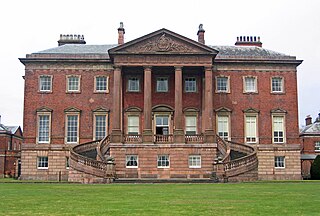
Tabley House is an English country house in Tabley Inferior, some 3 kilometres (1.9 mi) to the west of the town of Knutsford, Cheshire. The house is recorded in the National Heritage List for England as a designated Grade I listed building. It was built between 1761 and 1769 for Sir Peter Byrne Leicester, to replace the nearby Tabley Old Hall, and was designed by John Carr. The Tabley House Collection exists as an exhibition showcased by the University of Manchester.
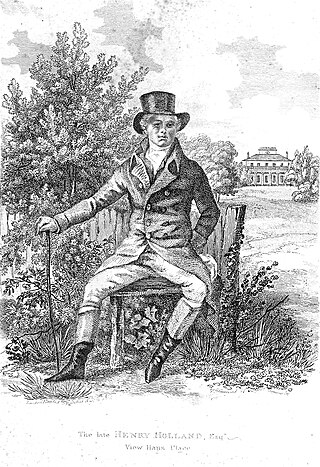
Henry Holland was an architect to the English nobility.

Alfred George Stevens, was a British sculptor. His major work is the monument to the Duke of Wellington in St Paul's Cathedral.

The Dorchester is a five-star hotel located on Park Lane and Deanery Street in London, to the east of Hyde Park. It is one of the world's most prestigious hotels. The Dorchester opened on 18 April 1931, and it still retains its 1930s furnishings and ambiance despite being modernised.

Sir Alfred Downing Fripp was a British surgeon. He was Honorary Surgeon to His Majesty in the Medical Households of King Edward VII and King George V. He is also known for his contribution to the development of field hospitals during the Boer War.

Westonbirt House is a country house in Gloucestershire, England, about 3 miles (5 km) southwest of the town of Tetbury. It belonged to the Holford family from 1665 until 1926. The first house on the site was an Elizabethan manor house. The Holfords replaced it first with a Georgian house, and then Robert Stayner Holford, who inherited Westonbirt in 1839, replaced that house between 1863 and 1870 with the present mansion which was designed by Lewis Vulliamy. He also remodelled the gardens, diverted the main road and relocated the villagers.

The Villard Houses are a set of former residences at 451–457 Madison Avenue in the Midtown Manhattan neighborhood of New York City, United States. Designed by the architect Joseph Morrill Wells of McKim, Mead & White in the Renaissance Revival style, the residences were erected in 1884 for railroad magnate Henry Villard. Preserved as a historic landmark, the houses comprise a portion of the Lotte New York Palace Hotel, whose main tower is to the east. The residences are New York City designated landmarks and are listed on the National Register of Historic Places.

Robert Stayner Holford (1808–1892), of Westonbirt, in the village of Weston Birt, Gloucestershire, MP for East Gloucestershire, was a wealthy landowner, gardening and landscaping enthusiast, and an art collector. With his vast wealth, he rebuilt Westonbirt House from the Georgian mansion erected only decades earlier by his father, and founded the Westonbirt Arboretum after succeeding his uncle and father between 1838 and 1839. His London home was Dorchester House.

Westonbirt School is a co-educational independent day and boarding school for boys and girls aged 11 to 18 located near Tetbury in Gloucestershire in South West England. Founded in 1928. The historical Westonbirt House is part of the school. Westonbirt Prep School is located within the 210 acre grounds of Westonbirt School.
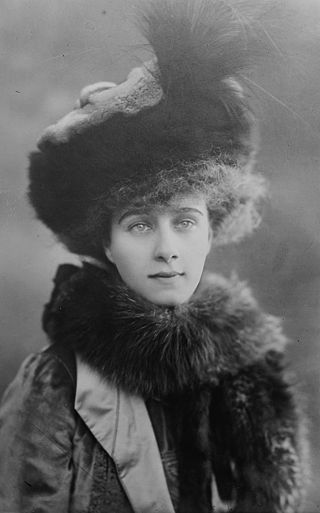
Jane Beatrice Forbes, Countess of Granard was an American-born heiress, social leader, and thoroughbred horse racer.
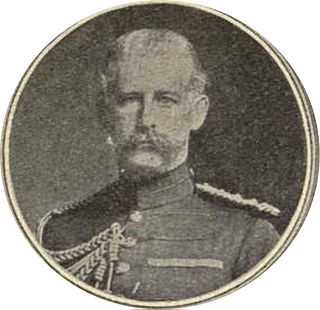
Lieutenant-Colonel Sir George Lindsay Holford was a British Army officer and courtier. The son of Robert Stayner Holford, he inherited his father's considerable fortune, which included the Westonbirt House in Gloucestershire and Dorchester House on Park Lane, London. He continued his father's work in developing the Westonbirt Arboretum, which still exists today and is open to the public.

The Mrs. William B. Astor House was a mansion on the Upper East Side of Manhattan, New York City, at 840-841 Fifth Avenue on the northeast corner of 65th Street, completed in 1896 and demolished around 1926.
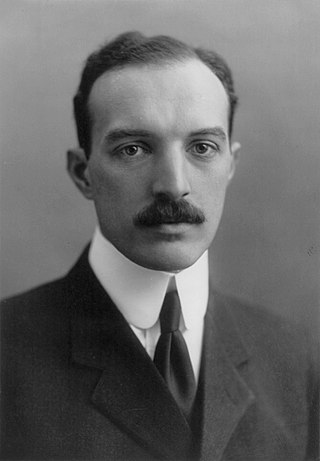
Ogden Mills Reid was an American newspaper publisher who was president of the New York Herald Tribune.
Major Sir John Hubert Ward was a British army officer and courtier.

Jean Templeton, Lady Ward was an American-born philanthropist and society hostess. The only daughter of Whitelaw Reid, the American ambassador to the United Kingdom, she lived in London after her marriage to Hon. Sir John Hubert Ward, second son of William Ward, 1st Earl of Dudley.









